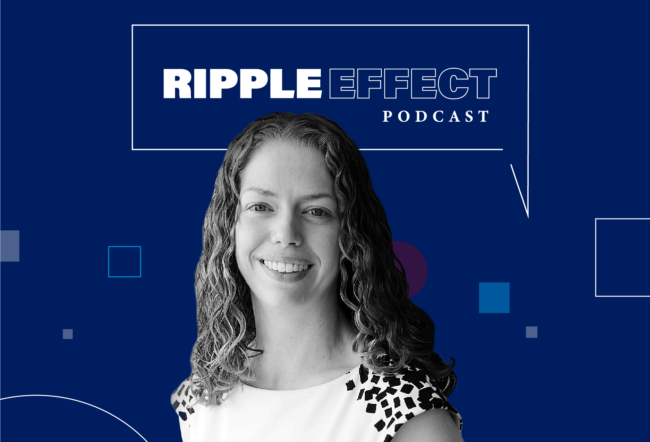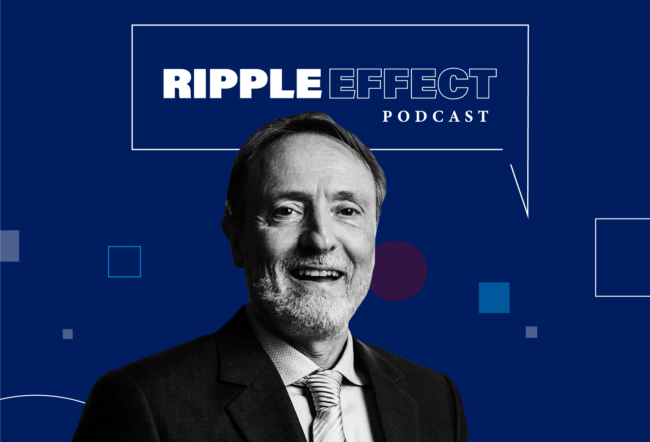Press releases, typically self-serving and devoid of real news, are often ignored by the media. But even the most jaded scribes knew there was a hot story in the separate handouts issued June 7 by Microsoft and SAP.
Microsoft, the world’s largest maker of software for personal computers, last year had approached Germany’s SAP, the world’s leading business-software company, about a potential merger, but the preliminary talks were discontinued this spring, said the dry-as-dust announcements. The news sparked a buzz throughout the technology world, and for good reason. Wharton faculty members and other academics say that it was as good an indication as any that the software industry is ripe for consolidation. If nothing else, highly respected but little-known SAP has become a more familiar brand as a result of being wooed by Bill Gates. They differ, however, on whether SAP needs to link up with a major partner in order to thrive. And some suggest that a SAP-Microsoft merger may not be a dead issue.
The coming consolidation in software will involve companies in the three chief categories of software for both businesses and for consumers. They are: applications (software that handles a slew of administrative tasks for corporations, such as financial management, procurement, human resource management and order processing, as well as for desktop computers); platforms (the so-called “middleware” systems on which some software applications run and which coordinate different software programs); and system infrastructure (the operational software that keeps computers running). These three categories are breaking down as both consumer- and business-software companies eye new markets for growth and as the open-source software movement grows.
“I think [a shakeout] is inevitable, I really do,” says Dan Hunter of Wharton’s legal studies department. Adds marketing professor Peter S. Fader: “It’s about time. Consolidation makes so much sense.”
An article and graphic in the June 14 edition of The Financial Times discusses the interplay and rivalries among the many companies competing in the software industry. SAP, Oracle, PeopleSoft and Siebel Systems, for example, are major players in enterprise applications, while Microsoft is the leader in desktop applications. Oracle, IBM and Microsoft are players in middleware. Microsoft, Sun Microsystems and IBM are major names in operational software. Hovering behind these name-brand companies — and posing a threat to proprietary software — are free, open-source systems such as Linux and MySQL. Companies that have a presence in the desktop space are eager to move into enterprise software, while business-software firms would like a crack at the consumer market. What is more, Microsoft opposes the spread of Linux while IBM embraces it.
It was Oracle’s hostile takeover attempt of PeopleSoft in 2003 that led to the disclosure of the SAP-Microsoft talks. The U.S. Justice Department is challenging that takeover in court. Microsoft and SAP said they decided to make their talks public because they expected word of their discussions to become public as part of the court case.
Raphael Amit, professor of entrepreneurship and director of the Wharton Electronic Business Initiative, says a combination of SAP and Microsoft would be “advantageous from a strategic standpoint for both companies. For Microsoft, it would be going up market [to sell products to the world’s biggest companies] and for SAP it would expand its reach into segments of the market where SAP today does not enjoy a high degree of penetration.” SAP reportedly has a 54% share of the global market for enterprise software, compared with 13% for Oracle and 11% for Microsoft.
Other possible merger partners for SAP include IBM and Accenture, according to Amit. “Going with IBM or Accenture, which have armies of engineers who could help implementation of software, is a natural. SAP does software but not implementation, and Accenture and IBM do implementation but not software. There’s a certain degree of complementarity. But the story with Microsoft is a bit different. Microsoft, unlike Accenture and IBM, is not very active in the space where SAP dominates, so SAP would bring a lot to Microsoft. Maybe SAP is worth a lot more to Microsoft than to Accenture and IBM. And from that standpoint the shareholders of SAP might be better off with Microsoft.”
Renewed Talks?
Hunter says it is possible that SAP and Microsoft at some point may resume merger talks. He says Microsoft may need SAP more than SAP needs Microsoft.
“Microsoft hasn’t really been able to capture enterprise-level work as [much] as it wants, and that’s really important in the long run,” says Hunter. “SAP can continue going along [without necessarily merging because it has carved out such a strong position for itself]. Getting into bed with Microsoft can assist SAP. The German company can expand its market because of Microsoft’s size. It means it will drive down some technology that SAP has to the consumer level, which is a market to which SAP simply cannot get access. So it’s possible that the technology can be brought to a wider market, so that would be a benefit for SAP, but it is already a successful, profitable company.”
David Croson, a Wharton faculty member currently serving as visiting professor of information strategy at MIT, says SAP “may be worth a lot more to a strategic buyer than a financial buyer. Because it’s so all-encompassing, SAP is a sort of non-malevolent ‘trojan horse’. Once a company links all its data into a system such as SAP, selling that company more and more value-added services becomes a lot easier.” He notes that Microsoft bought Great Plains Software in 2000 for $1.1 billion as a strategic acquisition in an attempt to make inroads into the enterprise software market.
Wharton marketing professor Jagmohan S. Raju also believes SAP does not necessarily need to be acquired by Microsoft. “It can survive as a standalone company, I think. If anyone can, SAP can. It’s very strong.” Raju adds that he would not be surprised if Microsoft resurrected merger talks with SAP. “It would be a great thing for Microsoft. It’s not as clear what SAP gets from Microsoft. But definitely Microsoft gets a lot.”
Wharton’s Fader holds a different view, arguing that SAP and other enterprise-software firms need to find merger partners to survive. “You have to make a big distinction between the software industry as a whole and the enterprise software segment of that industry,” he explains. “While one of them has an unlimited future — the prospects for Microsoft are as bright as ever — Siebel Systems and SAP and Oracle are facing a bleak future. This was a brilliant move on the part of SAP [to hold merger discussions with Microsoft]. SAP really needs to be part of something else in the same way that Oracle is trying to take over PeopleSoft.”
Fader adds that existing enterprise-software firms will find it difficult to survive on their own because they cannot deliver enough value to customers. The components of a corporation – finance, management, human resources and the like – cannot be easily measured by software. Software companies saw great promise in breaking down businesses processes into individual steps, with each one being executed like clockwork, but things did not turn out that way. He says enterprise-software companies are differentiated from each other in the types of products they offer — some specialize in finance, for instance, others in management or human resources — but are not differentiated enough to enjoy a profitable niche for the long term.
After SAP and Microsoft announced that they had broken off merger talks, Henning Kagermann, SAP’s chief executive, gave several newspaper interviews. He told The Financial Times that the company would disclose details in July about its strategy to beef up its share of the enterprise software business in small- and medium-sized companies. He also noted that SAP was looking to acquire small companies – but only to deliver improved solutions to customers, not to buy market share or customers. In their prepared statements on June 7, SAP and Microsoft said they had no intention of resuming merger discussions. But in an interview with The New York Times, Kagermann said: “As a professional, I would never in my life rule something out for a company forever.”
Kagermann’s remark that SAP would look to acquire small companies came as no surprise to D.J. Wu, a professor of information technology management at the Georgia Institute of Technology. “If you look at history, SAP talks about merging with other companies all the time. Every month … firms go to SAP and say, ‘Can you buy us?’”
Not a Good Fit
But Wu says that that a merger of SAP and Microsoft would not be a good fit. “For those two [companies] to merge would be very difficult,” according to Wu. “If they merged, it would be a surprise to me. To truly deliver benefits to customers, SAP could merge with other firms, or Microsoft with others. But for these two big guys to merge, it would be a big surprise to me. Right now, they have different advantages in different areas. The only overlap is in business software. That would be complementary. But in the big picture of what Microsoft is doing, I don’t see the value creation to customers.” As for SAP, a merger with anyone would only make sense if the partner could help SAP improve the interoperability of its software with other systems.
Wu says SAP could remain quite strong on its own because it is such a strong player in business software. When he was a doctoral candidate at Wharton, Wu and Wharton colleague Lorin Hitt conducted a study that found that more than 75% of global Fortune 1000 firms use SAP software. “The business software market is a big one, a $30 billion business, and it’s [not going to diminish],” says Wu. “It’s going to be there because firms cannot now afford to get rid of any business software.”
Open-Source Competition
Wharton’s Hunter believes that SAP and other enterprise-software companies will face stiff competition from the open-source movement in years to come. “This would be a good time for SAP to be acquired, because it would be acquired expensively. You’re going to see in five years that the market capitalization of [software] firms will be eroded due to loss in market share. What was seen just five years ago as a crazy bunch of programmers, companies are now signing onto [open-source] systems. IBM has been doing it for ages. Some companies are saying they will open up their core technologies; Apple has already done it. As a movement in the software environment, open source seems robust. It hasn’t really attacked the firms that make all their money from providing corporate database solutions like SAP and Oracle, but it would be miraculous if it didn’t affect them in the long run.”
Fader says the open-source movement today is too weak to give SAP, Siebel and other software companies much reason to worry. “They used to fear it. They’re still very much aware of it. But it’s not the fast growth area that people thought it might be three or four years ago. Part of that is from legal wrangling. It’s also been a failure to deliver on its promises. Maybe the biggest thing open source had going for it was that it was anti-Microsoft.”
Hunter, Fader and Amit agree that a major shakeout in the software industry is just a matter of time. “A number of players will fall over in the next five years,” Hunter says. “I expect an analogy with the motor industry is not a bad one: You’ll end up with a relatively small number of dominant players and a coterie of players providing for them.”
“In end we’ll see the same old big players: Microsoft, IBM and maybe consulting firms,” according to Fader. “I do see that now starting to happen. I have to believe that conversations between Microsoft and SAP are happening. And they’re saying, ‘We wish we could have kept it a secret longer.’”
Says Amit: “The trend is toward consolidation. It would be very, very difficult to start another Oracle or another Microsoft today because the industry is maturing. Of course, software features and capabilities are profoundly important. But so are sales and distribution and brand. And here I see enormous returns to scale and the emergence of a much more concentrated software industry. It will take a long time for it to happen because there are literally thousands of companies. But it will be hard to stay independent.”



